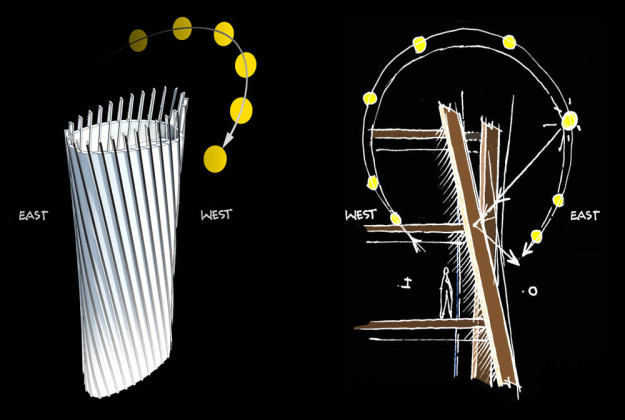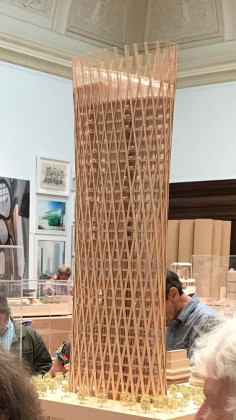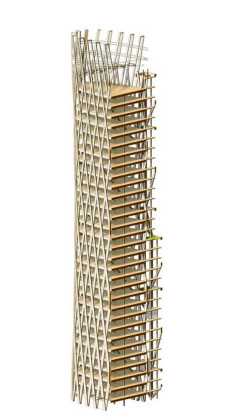Future Vision for a Healthier Greener City
After the meeting held as part of the Archi Design Timber Talks Series on November 1, 2021, at Bahçeşehir University Faculty of Architecture and Design, Kevin P. Flanagan, the guest of the event, answered the questions of Demet Sürücü and Melek Elif Somer about the role of wooden structures in the future of cities.
Contemporary design and application examples of wood are shared in the Archi Design Timber Talks Series, which started in the 2021 Fall Semester, also organized and moderated by Demet Sürücü. Within the scope of the event, the project and application processes of contemporary design in different geographies of the world, the outstanding advantages of wood as a building material for livable cities are discussed.
Demet Sürücü: Climate crisis, an increase of global carbon emissions in urban areas was and is a high importance topic, at least since Hannover expo in 2000 with increased visibility in built examples. What do you think about that?
Kevin P. Flanagan: I believe that climate change is less a crisis but an opportunity to better our urban life for over 1/2, and in 2050 some 2/3 of humanity living in cities. What evolution of our species has shown is that in each of these near extinction events, known as Hourglass events, we as a species become smarter after each environmental collapse and we ultimately adapt resulting in an increase in our brain size and capacity to learn.
One can appreciate why billions of US Dollars are spent each year to hide the global forces that for some 20 years have recklessly accelerated the worst human tendencies. Deadlock is one definition of crisis, and indeed such a case does exist but this is simply a chimera based on arguments that are specious, while being paid for by malevolent often private enterprises and bad actors.
At the moment, many cities around the world are preparing for inundation as a first defence while simultaneously subsidizing those who initiated the causes.
A reasoned solution should be found soon. Sir David King has stated that we only have five years to act decisively or our futures will be determined for the next 1,000 years.
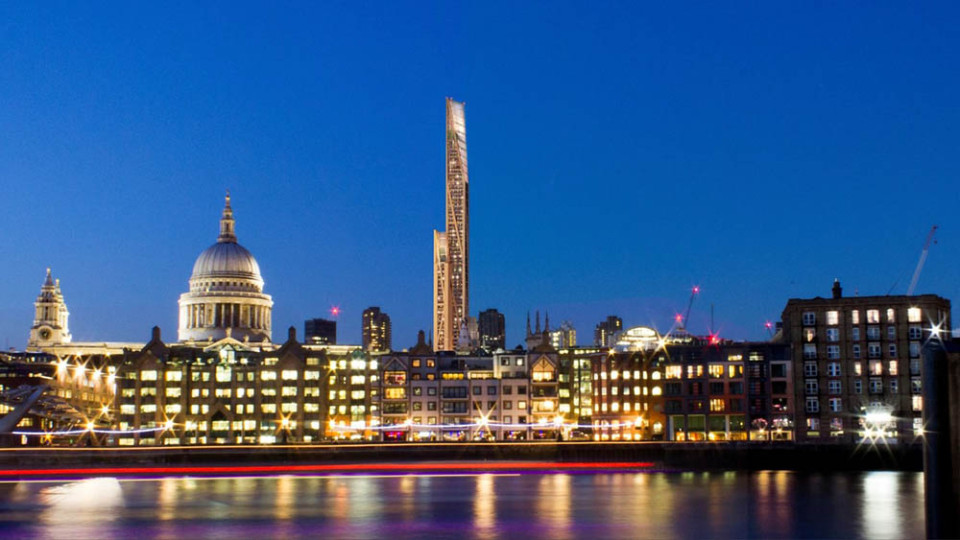
Melek Elif Somer: Especially after the pandemic period, these topics gained in importance. Do you agree with that and why? Can you explain your viewpoint?
KPF: An argument that very literally can tie together population growth, human industrial expansion into virgin forests resulting in the "unnatural" mixing of pathogens and the crossing of these pathogens over into the human population certainly has merit. Climate change has indeed caused mass migrations into new habitats where new pathogens are found. Over 25 years ago, I recall speaking with a climatologist, and he was clear that unprecedented mass migrations would be the most significant impact of climate change.
Global cooperation, which we have seen in the identification and mapping of Covid has opened new and urgent channels of global human cooperation that we need to maintain now to facilitate new solutions for this more disruptive phase, which is environmental.
Temperature rises in some cities have already created unlivable situations. While pollution levels from nearby coal burning and transport pollution are also initiating replanning and wholesale relocation of cities.
Humanity has been placed, considering the past 20 years of inordinate and unwelcome influence, in a very inauspicious and undesirable situation. One might say am precarious position, certainly not one we would wish to gift to our children and grandchildren of the coming generations.
MES: What do you think about the responsibilities of an architect to sustainability goals?
KPF: Some 50% of global CO2 emissions sit within industries in which architects are involved, if not in a leadership decision-making role or consultation and specifying capacity. The industry has a paucity of research and initiatives that would initiate change and positive advancement in reducing CO2 and the adoption of AI and robotics, which could half the cost of residential construction. Without high level guidance and the clearly illustrated benefits tied to new materials and market forces it is likely little will move forward. Some industries are naturally tied to energy providers and fall under the same banner in the rhetoric to persuade hearts and minds in this market battle to safeguard these mature industries.
One always returns to the analogy of a frog in a pot of slowly boiling water, whose actions belie an illogical inaction and a business as usual approach in the face of imminent danger. I believe most people realize something very significant is happening, but the global scale and ubiquity of the challenge overwhelms. Of course, there is a small segment of people who simply do not understand and doubt the sometimes counterintuitive and difficult to grasp science.
Happily, there are "green shoots" in Scandinavia that suggest change in the industry as Millennials emerge as a market force, seizing more ethical lifestyles.
As our case is new, we must think and act anew, to save ourselves; observe, think, and act as the present demands.
MES: As an architect which ways are existing to integrate sustainability in design?
KPF: The Edge, which was an award-winning project completed in Amsterdam and considered the world’s most sustainable building, also included cutting-edge building management that was tuned to each individual's preference. It was an interactive design that "listened" and changed its environment to the benefit of the occupant and made them "happy" while concurrently improving their concentration, socialization skills, and ultimately their productivity and their desire to stay.
The design was also tied to nature, to the sun, harvesting solar gain and rainwater for use within and benefiting gardens out of doors.
It was a virtuous cycle that benefited all and was based on notions of freedom.
DS: What can we do for our existing cities?
KPF: I believe we all now understand that urban parklands are both part of a healthy regime of walking, socializing, and taking in fresh air in a treed and green setting is essential. We need more green spaces that provide the opportunity to relax, think broadly and dream big blue-sky plans.
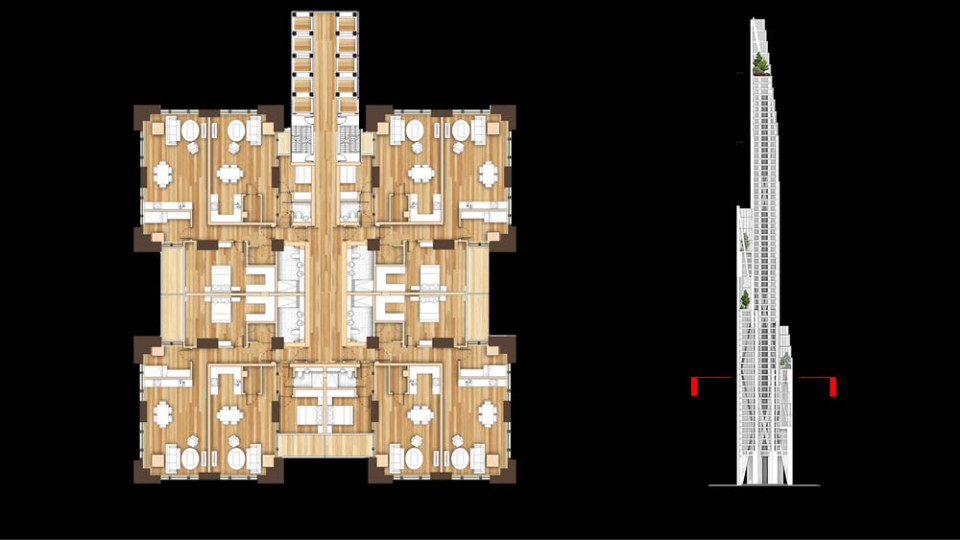
MES: What we can do for future cities?
KPF: Covid has reset the clock on what is possible and desirable.
As Barcelona, once exceedingly air polluted, is doing, reduce individual car use, promote walking, cycling and better public transport; promote the notions of decentralized cities and "15 minute" cities. Understanding that green can be the cleansing lungs of a city's heart, and how new hybrid work patterns globally have been shown to create happier and more productive employees and citizens; more civic minded citizens focused on improving and supporting local needs.
To promote the use of new cleaner and healthier materials such as engineered mass timber for those seeking new homes that are healthier and whose city’s air is cleaner; healthier and happier spaces and places in our community espoused by our new younger urban denizens, and their children.
DS: What is an eco-friendly material in your opinion?
KPF: I tend to believe natural materials should be a default, as is the consideration of creative reuse of buildings and places where appropriate.
Concrete and steel use should be significantly reviewed and reduced, in keeping with an audit of the industry and influence. Broadly, newer clean industries should be promoted due to the long-term health benefits.
DS: Is using eco-friendly building materials a sufficient way to develop a more sustainable future?
KPF: I do not understand the question in a post-Covid world, where the goal has been improving our collective health and avoiding urban stresses that can act as stressors that negatively reduce the immune system; in this light does a choice exist? We do need to again welcome nature back into our cities as an essential response to increasing urban populations, and the need to improve health and reduce stress.
There are presently two significantly different futures ahead, one is unimaginably chaotic and a disbenefit to humanity, involving suffering, starvation, fisheries collapse, less fresh water, food shortages, greater pollutants, and more ingestion of micro-nano plastics as a by-product of industry. Plastics, when ingested, mimic natural human systems and result, it seems, in disrupting reproduction.
Unmitigated pollution that becomes ubiquitous affects our collective mental and physical health; air pollutants in cities are already attributable to significant deaths.
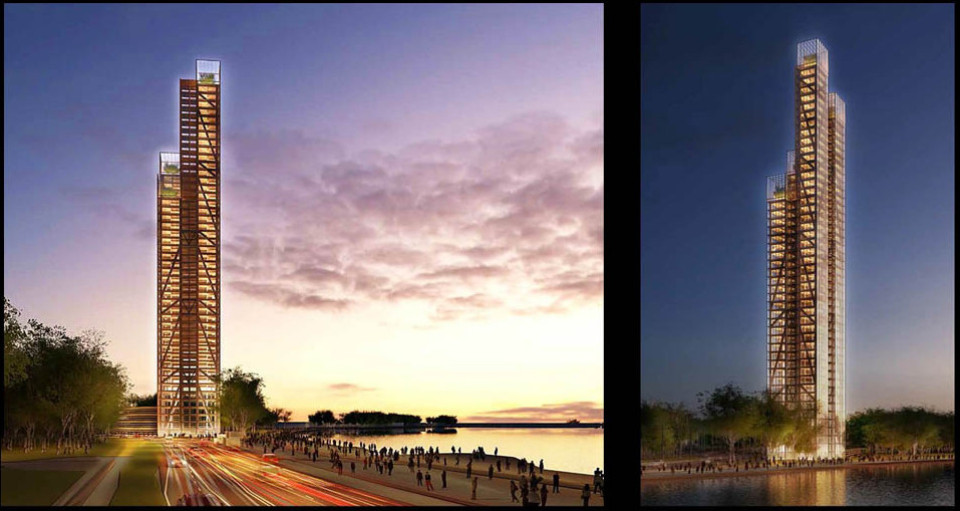
DS: Is timber the only eco-friendly material?
KPF: Engineered mass timber has some very positive attributes that would benefit the industry and are in keeping with advances in procurement, such as AI and robotic blockchain sourcing and promises healthier, far less expensive and time-saving construction.
It should be seriously investigated for its promise, and its proven health benefits post-Covid.
MES: What do you think about the opinion of EU-Climate Action showing deforestation as one of the reasons for rising emissions? "…Trees help regulate the climate by absorbing CO2 from the atmosphere. When they are cut down, that beneficial effect is lost and the carbon stored in the trees is released into the atmosphere, adding to the greenhouse effect…"
KPF: In Europe, I understand that insects devour more timber than is properly used by man for their benefit. These insects, in devouring these timbers, excrete and release gases that are only adding to our concerns. Suggesting this natural wealth as managed forest is underutilised.
The desire to save Amazon forests should be encouraged, being natural habitats. These should certainly be protected.
Managed forests were planted and harvested over generations for construction and earlier pulp for paper manufacturing, which is now moribund. These now underused forests, intended for use like a crop, should be released to solve our CO2 challenge through an industry that sequesters CO2 naturally.
DS: How and why did you decide to work with timber as a natural material?
KPF: I was invited as part of a research grant with Cambridge University.
DS: How can we convert some of the natural, structural disadvantages of timber into an advantage?
KPF: Cross laminating creates a new material with some terrific structural properties that should be investigated more thoroughly through government sponsored design and build competitions, as is being done in Canada.
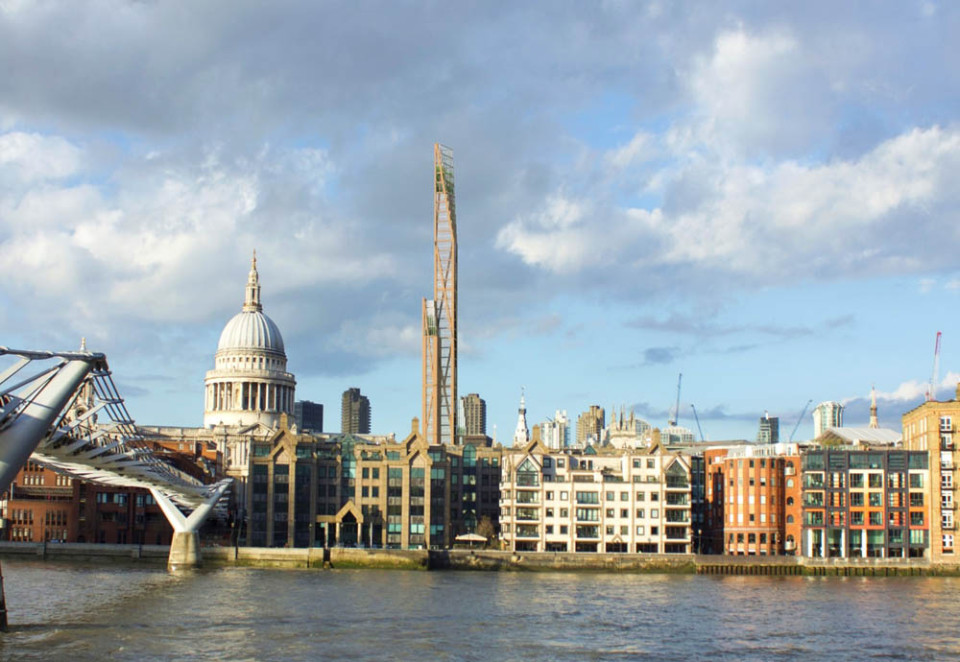
MES: Are there certain limits building with timber in planning, design, and construction that we should be aware of?
KPF: Like any material, there are benefits and disbenefits. These are yet to be fully explored, and we should, as an industry, embrace the challenge fully at the moment.
DS: For timber structures, do we need different construction technologies compared with steel and RC structures?
KPF: For high-rise buildings, there are structural tables based only on the use of concrete and steel. Studies suggest that these should be revised when engineered mass timber is considered. I believe the material being cellular and also multi direction resolves large forces in a more distributed fashion, it also seems that the material exceeds expectation when considering vertical loading, and also torsional loading. Creating guidance for the industry that best suits the reality of this new material seems essential if we are seeking to understand the material's specific optimization of use and the economies it may provide.
Using concrete and steel guidance seems a dis-benefit, only serving to further intrench old ways.
DS: Are timber constructions more expensive than constructions with other materials?
KPF: Some examples suggest a 15% to potentially 20% savings. Certainly, there is a savings in time and the lightness and strength of the material means far fewer movements on site and far fewer hands required improving speed, safety and some 40% less waste. While significantly reducing one’s CO2 footprint and creating something that in 50 years’ time can be easily dismantled and components reused.
MES: What can you say about the belief that timber constructions are disadvantaged in case of fire? Is a timber building more dangerous than a RC, steel, or brick building? Are special structures needed for fire protection?
KPF: Concrete spalls badly in fire; its steel rods embedded in the concrete expand in heat and "pop" out and fall away, destabilizing the slab and potentially resulting in progressive collapse.
Steel needs to be well protected from the heat of a fire because it is a supercooled liquid and it desires to return to a liquid state. Often in a fire, particularly one where an explosion has stripped away the impermanent spray on fire resistance, the steel will dramatically fail and collapse without notice. I understand that fire marshals consider steel unpredictable and dangerous in such situations.
Brick buildings are often simply steel buildings with a veneer of brick. Bricks like concrete and steel do not have a good CO2 footprint.
For the high-rise proposals investigated, the member sizes are so significant that fire concerns are a far less significant consideration. Like any good residential proposal, there should be two stairs and sprinklers.
DS: Long term durability of timber and timber constructions?
KPF: There are timbers, Cedars of Lebanon that I understand still exist with the Pyramids of Cheops from 4,000 years ago, there remaining living trees of this same age.
If timber is properly maintained it should last significantly past the usual 50-year building life that is the industry standard.
MES: Are timber buildings more expensive to construct and maintain?
KPF: Less expensive, easier to maintain. One needs to understand that concrete and steel are very heavily subsidized as they use a prodigious volume of energy in the form of oil, gas and/or coal. These fuels are significantly subsidized, directly and indirectly by federal governments, and concrete and steel as users on an industrial scale receive preferred rates.
Once those subsidies are removed gradually one could make a comparison.
Materials used in construction are also priced based on the vagaries of the market; concrete, in particular, is often strictly controlled by what is sometimes referred to as a cartel. Like the industry at large, many facets and practices are opaque.
MES: Do timber constructions need a special knowledge about building physics including thermal insulation, sound proofing, airtightness, vapour permeability…?
KPF: It is like any other material to be used in buildings; it requires testing in a lab to establish if it is fit for purpose, and if the material can be engineered to mitigate any evident disadvantages.
DS: What do you think about the use of timber as an exterior member? Is it complicated because of the need for protection measures? Is it difficult to maintain?
KPF: Along the eastern seaboard of the United States, 95% of all exterior cladding is made of timber. As it is exposed, it can be treated to extend its effective life and utility.
DS: The Edge is a well-known building. Can you give us information about the differences between The Edge and other timber buildings? Can you give us some information about the specialties of this project?
KPF: The Edge was primarily a precast long span construction, much like an inexpensive parking garage, with an innovative external precast concrete load bearing panelling. These panels were grouted together floor by floor, making for a very fast time saving and cost saving construction methodology. Timber was used for internal finishing.
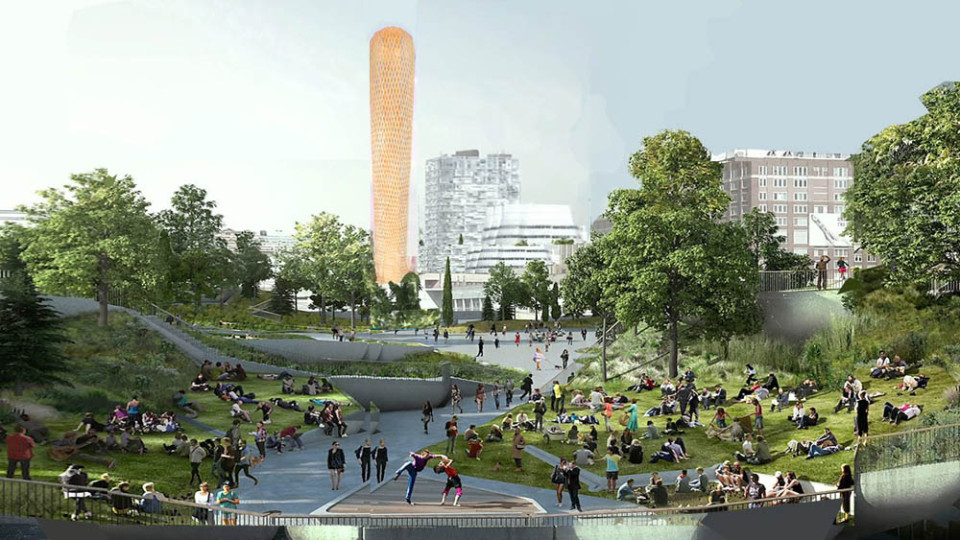
MES: 2. Is your project, the Oakwood Timber Tower, designed by a multidisciplinary team? How important is cooperation in constructing our future buildings and cities?
KPF: Collaboration, rather not cooperation, is certainly the key to success into the future as we strive to advance new and emerging technology integrated into ever more advanced and carbon neutral construction people love to live and work in.
DS: Did the design process of the Oakwood Timber Tower change many minds in the UK? Are there any changes to timber building regulations, building permissions or calculation methods?
KPF: Yes, but far more so globally. It made a very significant contribution to the adoption of new norms and standards, being a showcase proposal that brought forward the potential benefits of the use of a new material and a new methodology of construction that could save our planet and ourselves.
 03.12.2022
03.12.2022



